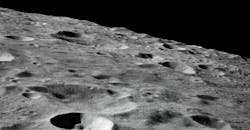Have Scientists Identified a Prime Location for a Lunar Colony?
No human has lived on the moon for more than three days. One reason for that short length of stay is that astronauts are exposed to several hazards: among them, extreme temperature variations, radiation, no atmosphere, and meteorite impacts. There is no atmosphere or magnetic field to protect and shield inhabitants.
Recently, however, scientists at JAXA (the Japanese space agency) analyzed data from its Selene probe, which had taken extensive radar surveys of the moon’s surface. The scientists were hunting for lava tubes, natural underground channels formed when a lava flow developed a hard crust, which thickened and hardened into a roof above the still flowing lava. If the lava stops flowing and drains out of the tube, it leaves behind an underground cave.
Locating a lava tube open to the surface would give future lunar explorers a good place to research heat flow within the moon, as well as quakes, and an opportunity to gather new types of rock samples. It could also give lunar colonists a safe place to live. So JAXA began looking for lava tubes.
The team finally found a distinctive set of echoes: a weak initial echo followed by a stronger one. The scientists believed it was the radar bouncing off of the lunar surface, then off of the floor and ceiling of the tube. They discovered the same echo pattern at several spots surrounding an apparent hole in the surface—a possible skylight in the lava tube’s roof.
JAXA went to NASA and looked at its gravity data from the Grail mission. It looked at areas where the data indicated a lack of mass below the surface, figuring it was evidence of a sublunar tube.
Researchers at Purdue University then stepped in and analyzed the radar and gravity data. They concluded it was likely that a lava tube up to several kilometers long and at least one kilometer from floor to ceiling lay beneath the moon’s Marius Hills. They also estimated the cavern would be large enough to house a city the size of Philadelphia. This estimate might prove prophetic.



